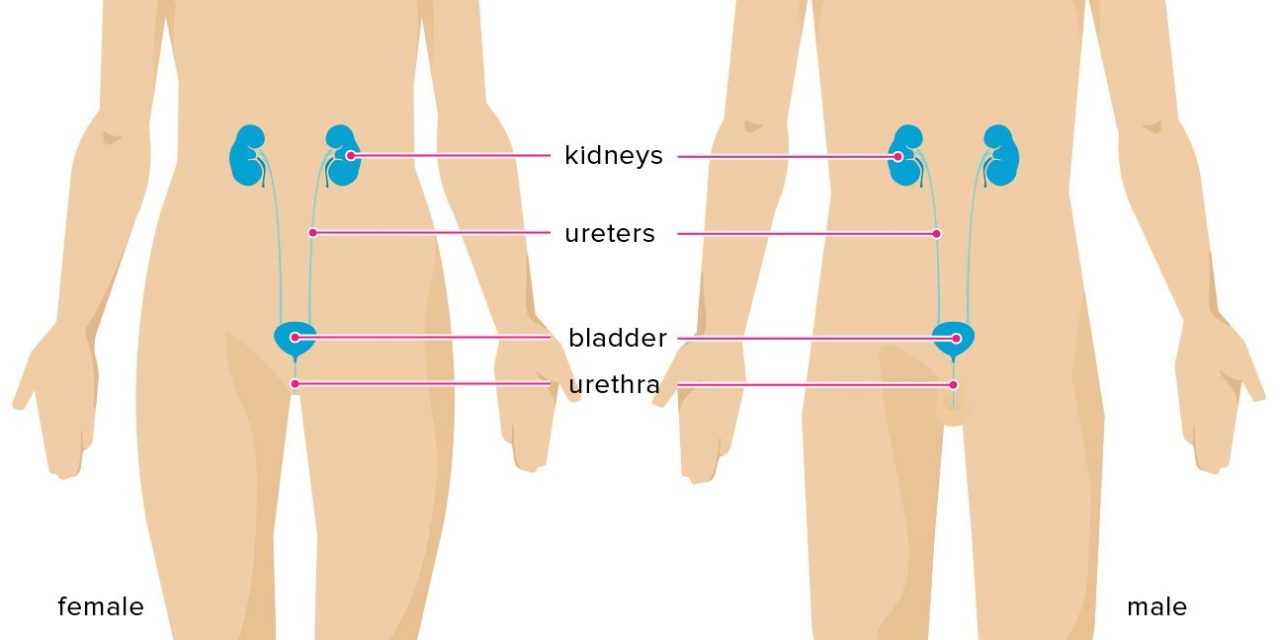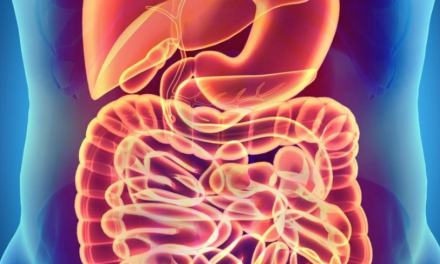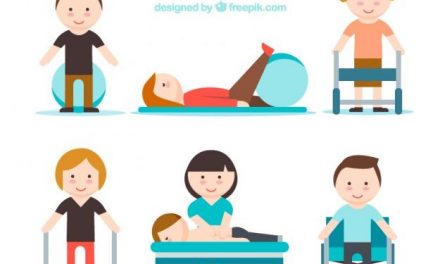A urinary tract infection (UTI) is an infection from microbes. These are organisms that are too small to be seen without a microscope. Most UTIs are caused by bacteria, but some are caused by fungi and in rare cases by viruses. UTIs are among the most common infections in humans.
A UTI can happen anywhere in your urinary tract. Your urinary tract is made up of your kidneys, ureters, bladder, and urethra. Most UTIs only involve the urethra and bladder, in the lower tract. However, UTIs can involve the ureters and kidneys, in the upper tract. Although upper tract UTIs are more rare than lower tract UTIs, they’re also usually more severe.
Symptoms of a UTI depend on what part of the urinary tract is infected. Lower tract UTIs affect the urethra and bladder.
Symptoms of a lower tract UTI include:
- burning with urination
- increased frequency of urination without passing much urine
- increased urgency of urination
- bloody urine
- cloudy urine
- urine that looks like cola or tea
- urine that has a strong odor
- pelvic pain in women
- rectal pain in men
Upper tract UTIs affect the kidneys. These can be potentially life threatening if bacteria move from the infected kidney into the blood. This condition, called urosepsis, can cause dangerously low blood pressure, shock, and death.
Symptoms of an upper tract UTI include:
- pain and tenderness in the upper back and sides
- chills
- fever
- nausea
- vomiting
Home remedies for a UTI
There are no home remedies that can cure a UTI, but there are some things that you can do to help your medication work better.
These home remedies for UTIs may help your body clear the infection faster. Cranberry juice or cranberries don’t treat a UTI once it’s started. However, a chemical in cranberries may help prevent certain types of bacteria that can cause a bacterial UTI from attaching to the lining of your bladder. This may be helpful in preventing future UTIs.
Untreated UTIs
It’s important to treat a UTI — the earlier, the better. Untreated UTIs become more and more severe the further they spread. A UTI is usually easiest to treat in the lower urinary tract. An infection that spreads to the upper urinary tract is much more difficult to treat and is more likely to spread into your blood, causing sepsis. This is a life-threatening event.
If you suspect that you have a UTI, contact your doctor as soon as possible. A simple examination and urine or blood test could save you a lot of trouble in the long run.
If you’re a woman, your chance of getting a urinary tract infection, or UTI, is high; some experts rank your lifetime risk of getting one as high as 1 in 2 — with many women having repeat infections, sometimes for years on end. Here’s how to handle UTIs, whether you’re experiencing your first or fifth infection, and how to make it less likely you’ll get one in the first place.
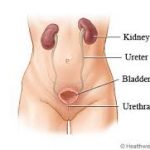
What Causes UTIs in Women
UTIs are a key reason we’re often told to wipe from front to back after using the bathroom. That’s because the urethra — the tube that transports urine from the bladder to the outside of the body — is located close to the anus. Bacteria from the large intestine, such as E. coli, are in the perfect position to escape the anus and invade the urethra. From there, they can travel up to the bladder, and if the infection isn’t treated, continue on to infect the kidneys. Women may be especially prone to UTIs because they have shorter urethras, which allow bacteria quick access to the bladder. Having sex can introduce bacteria into the urinary tract, too.
To identify a UTI, keep an eye out for the following symptoms:
A burning feeling when you urinate
A frequent or intense urge to urinate, even though little comes out when you do
Pain or pressure in your back or lower abdomen
Cloudy, dark, bloody, or strange-smelling urine
Feeling tired or shaky
Fever or chills (a sign the infection may have reached your kidneys)
Tests and Treatments for UTIs
If you suspect you have a urinary tract infection, head to the doctor. You’ll be asked to give a urine sample, which will be tested for the presence of UTI-causing bacteria. The treatment? Antibiotics to kill the intruders. As always, be sure to finish off the prescribed cycle of medicine completely, even after you start to feel better. And drink lots of water to help flush the bacteria from your system. Your doctor may prescribe a medication to soothe the pain, and a heating pad may also be helpful.
In a bladder infection, bacteria invade and overgrow in the bladder. Sometimes the bacteria can take hold in the kidneys or the tubes that drain urine from the kidneys to the bladder. These conditions are all known as urianary tract infections, or UTIs. They are more common in women than in men.
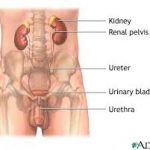 Most UTIs can be cured easily with antibiotic drugs.
Most UTIs can be cured easily with antibiotic drugs.
Symptoms of UTIs
The symptoms of a bladder infection tend to come on suddenly and include:
- painful urination and a burning sensation
- needing to urinate frequently
- sudden urges to empty your bladder, called urinary urgency
- pain in your central lower abdomen, just above the pubic bone
- blood in your urine
Symptoms of a UTI that involves the kidneys include the following, in addition to the preceding ones:
- pain in your sides or back that doesn’t change when you change position
- fever and chills
- nausea and vomiting
Certain symptoms in addition to those of a UTI could mean you have a prostate infection (prostatitis). These include:
- fever
- chills
- fatigue
- difficulty urinating or “dribbling”
- pain in your pelvis or the area between your rectum and scrotum (perineum)
Causes of UTIs
Most UTIs are caused by the bacterium Escherichia coli (E. coli), which is naturally present in your body. The bacterium gets into the urinary tract through the urethra. The urethra is the tube that drains urine from your bladder through your penis.
UTIs are more common in women than in men because their urethra is shorter and the bacteria need to travel a shorter distance to reach their bladder. It’s unlikely for a man to catch a UTI from having sex with a woman, because the infection is typically from bacteria already present in the man’s urinary tract.
UTIs in men are more common with older age. One reason is that older men are more likely to develop noncancerous enlargement of their prostate gland, called benign prostatic hyperplasia. The prostate wraps around the neck of the bladder, where the urethra connects to the bladder. Enlargement of the prostate gland can choke off the bladder neck, making it harder for urine to flow freely. If the bladder doesn’t empty completely, bacteria that are normally flushed out with the urine might gain a foothold.
Other factors that can put you at greater risk for UTIs include the following:
- being immobile for long periods
- not drinking enough fluids
- recent urinary tract surgery
- diabetes
- being uncircumcised
- fecal incontinence
- engaging in anal intercourse, which exposes the urethra to more bacteria
Diagnosing UTIs
To diagnose a UTI, your doctor will examine you and ask about symptoms, including any past history of UTIs. You may be asked to provide a urine sample to check for pus and bacteria. The presence of pus strongly points to a UTI.
If your doctor suspects an enlarged prostate gland, they may do a digital rectal exam, using a gloved finger to feel your prostate gland through the wall of your rectum.
Treatment for UTIs
If you have a UTI, you will need to take antibiotic medications. Depending on the type of antibiotic your doctor prescribes, you will take the pills either once or twice a day for five to seven or more days.
It’s also important to drink adequate fluids. You may be tempted to reduce your fluid intake if urinating is uncomfortable. Urination can help flush the bacteria from your system. Stay hydrated and urinate often while taking your antibiotics.
Many people drink cranberry juice during UTIs in hopes of clearing the infection. Lab experiments with mice showed that several substances in cranberry juice lowered bacteria count in the bladder. However, there is no strong evidence that drinking cranberry juice during a UTI eliminates the infection or speeds recovery.
Recovering from UTIs
After starting antibiotics, you should feel noticeably better within two to three days. If your symptoms don’t clear up after taking antibiotics, see your doctor.
It’s important to finish all antibiotics prescribed, even if you’re feeling better. Stopping your antibiotics prematurely can encourage growth of bacteria resistant to common antibiotics. In effect, less than the full course of treatment kills off the “weak” bacteria, leaving the stronger and more resistant strains.
Preventing UTIs
To prevent UTIs, the most important thing is to reduce the chance of bacteria invading your urinary tract. Steps you can take include the following:
- Urinate when you feel the need. Don’t “hold it in.”
- Drink adequate fluids. For most people, that means drinking when thirsty and drinking during meals. When it’s hot and you’re active in hot weather, drink a little extra water. All fluids count toward being sufficiently hydrated, including soft drinks, coffee, and tea. Learn more about daily water intake recommendations.
- During toileting, wipe from front to back.
- Keep your genital area clean and dry.
Outlook
UTIs in men are less common than in women but have similar causes and treatment. Taking antibiotic medications usually clears the infection in five to seven days. Men who have prolonged UTIs, or UTIs that come back frequently, should be evaluated by a doctor for conditions like an infection in their prostate gland (prostatitis).

